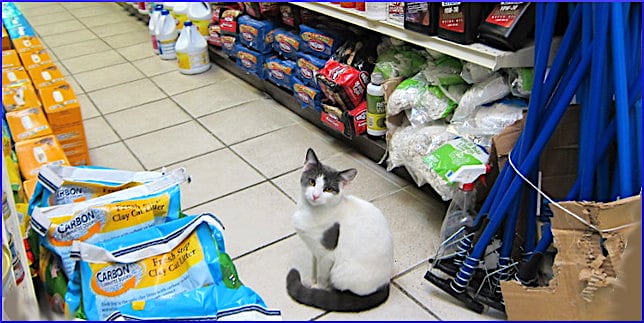
In recent posts, Childhood Obesity News looked at some of the ups and downs in thinking about food scarcity or insecurity. We saw how researchers found more grocery stores in low-income neighborhoods than in wealthier areas, which seemed to belie the whole food desert concept.
For Latinos, access to healthy foods can be sporadic. But that was not the end of it. Around the same time, the National Council of La Raza stated:
Counties with large Hispanic populations have a greater proportion of people with limited access to grocery stores (29 percent) than other counties do (21 percent).
The report pointed out a few other things. Although a predominantly Mexican-American neighborhood might be dotted with bodegas, that did not equate with food abundance. The stores all offered the same processed, nutritionally inadequate choices.
But when the owners were working with outdated, inefficient equipment and the architecture of another age, how could it be otherwise? Some were not aware of business best practices. They needed education in how to take care of fresh produce, to the advantage of both themselves and the customers. To invest in cooler cases and well-functioning display bins, they needed grants, or loans, or tax breaks, or some variety of financial incentive.
Some impatient critics believe, or at least claim, that there is no demand for fresh produce and other ingredients in Hispanic neighborhoods because the residents prefer junk food. Managing Director at the Texas-based marketing agency Sensis Karla Fernandez Parker set the record straight about that common misconception by applying common sense:
The demand for fresh produce and healthier options is there, especially among Latinas who may be less acculturated than their contemporaries. They typically immigrated to the U.S. when they were young, so their cooking is rooted in the traditions of home. Yet finding the fresh ingredients to make those traditional dishes is difficult in these deserts, especially without a car.
At any rate, various seemingly negative discoveries in some parts of the country did not slow down the interest in finding and fixing similarly deprived areas elsewhere.
Rather than abandon the food desert idea altogether, some proponents decided that the problem was with terminology, and favored “resource desert” or “food hinterland” as better descriptives. Mostly, formal research had not been designed in ways that agree on basic parameters, which makes data curation difficult.
Different questions and standards in various studies make it difficult to perceive what is really going on. Were the samples too small? Were the geographical areas chosen for study too narrow? Was the whole thing a misunderstanding based on faulty study techniques and implementation?
Still, the fact remains that the mere presence of a store selling fresh produce at a reasonable price is in no way a guarantee the people will add it to their diets.
As time went on, more activists felt that food desert philosophy as it first emerged might be doing more harm than good — because it obscured the underlying societal evils of poverty and hunger, and (with the best will in the world) distracted us from real solutions.
Some saw it as nothing more than a false path, perhaps regretting that they so readily took the food desert concept and ran with it. It began to look as if changing the built environment, even though expensive and sometimes unpopular, is still easier than changing people’s hearts and minds.
One way or another, preoccupation with the food desert concept continues.
Your responses and feedback are welcome!
Source: “Building Oases In The Food Deserts Of Hispanic Neighborhoods,” MediaPost.com, 05/10/18
Source: “Say Good-Bye to “Food Deserts,” Ecotrust.org, 01/14/14
Photo credit: Seth Werkheiser on Visualhunt/CC BY-SA

 FAQs and Media Requests:
FAQs and Media Requests: 











